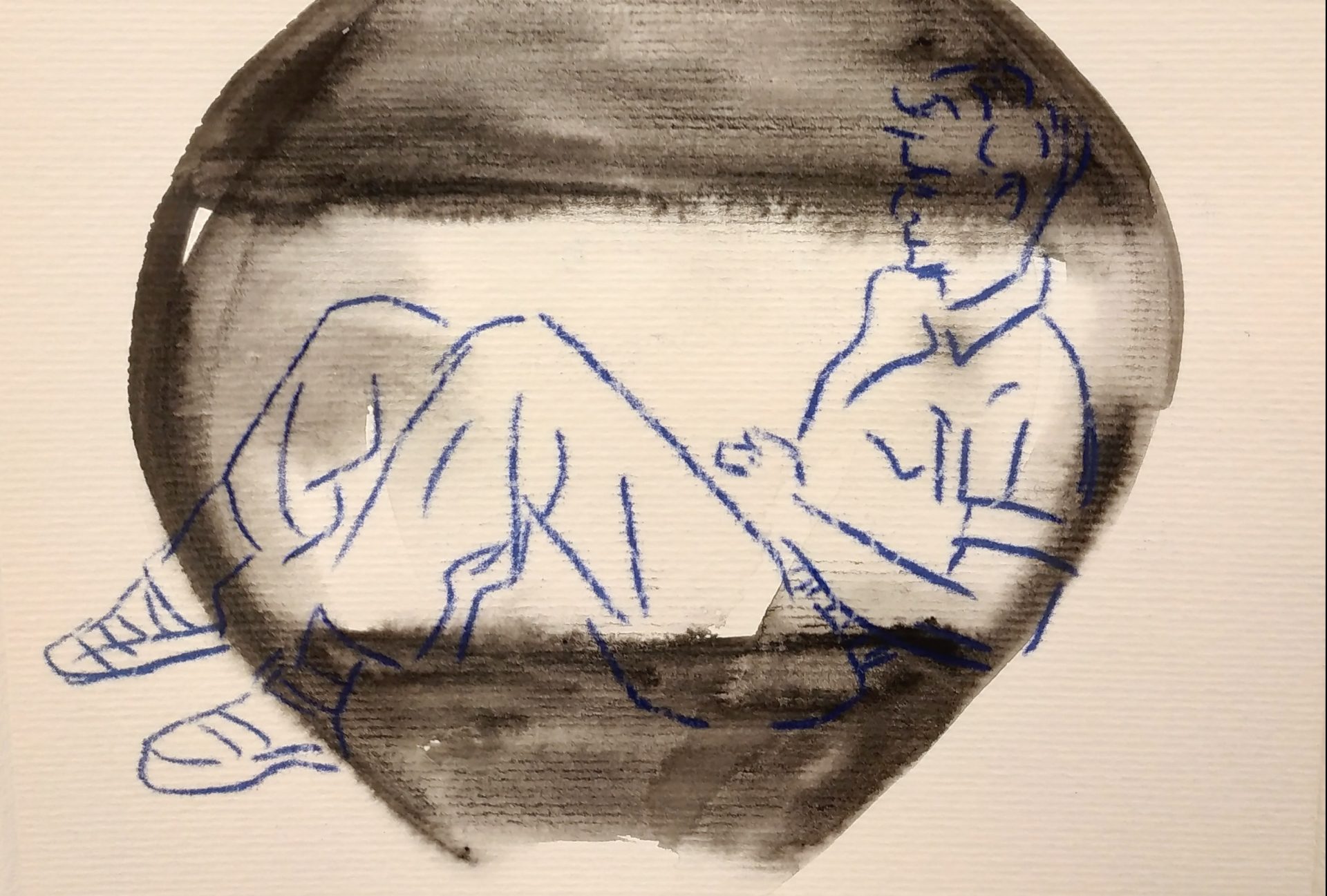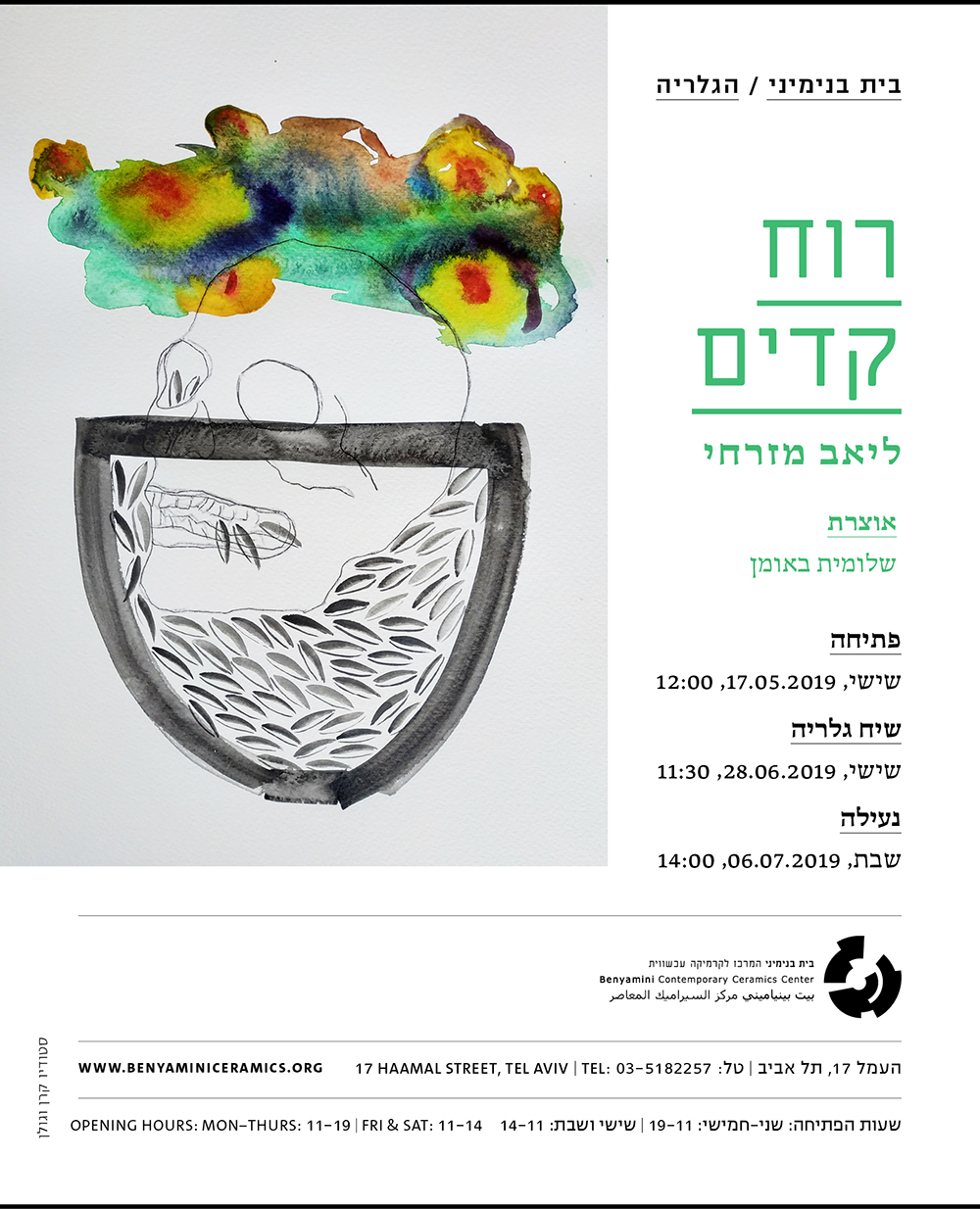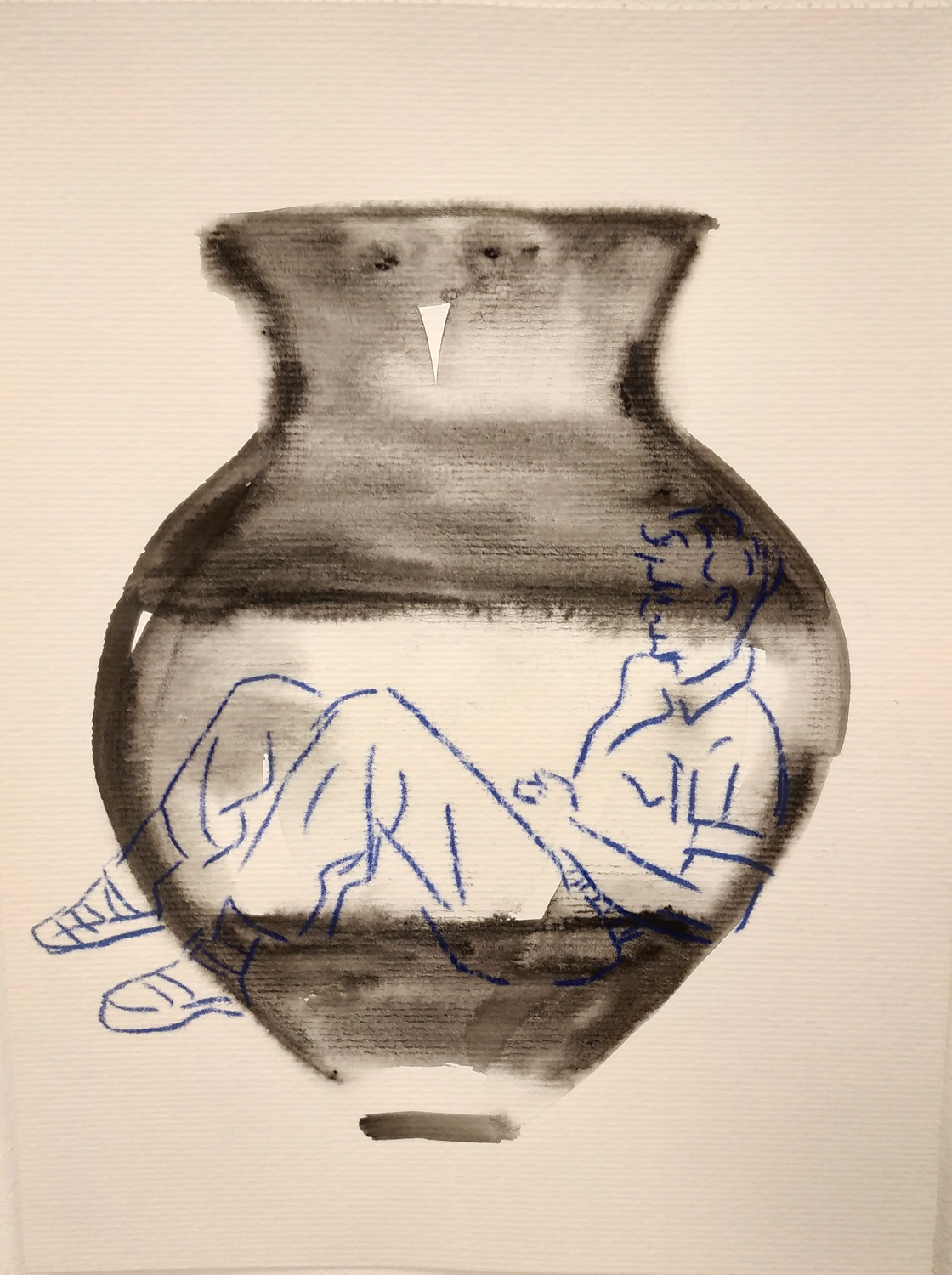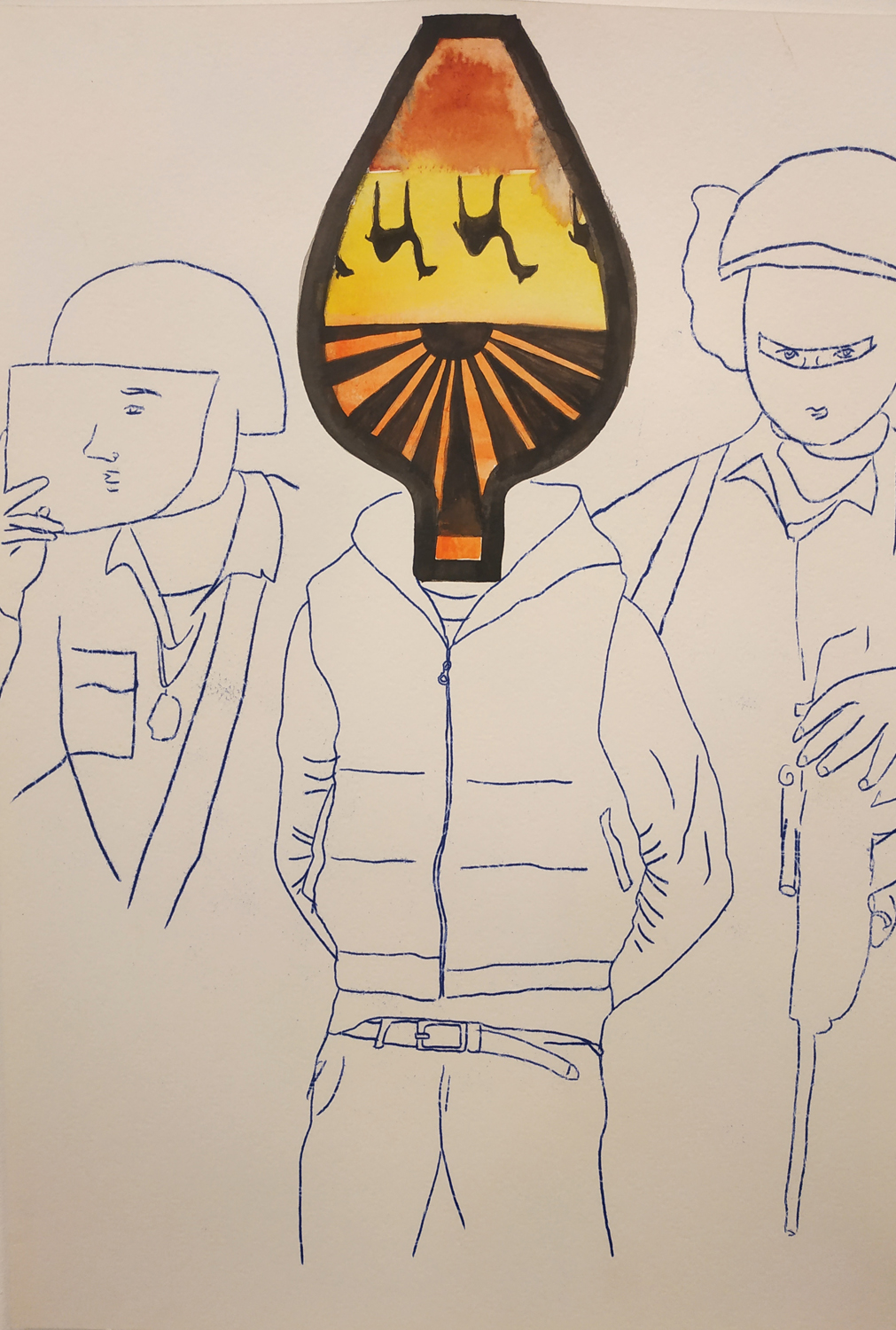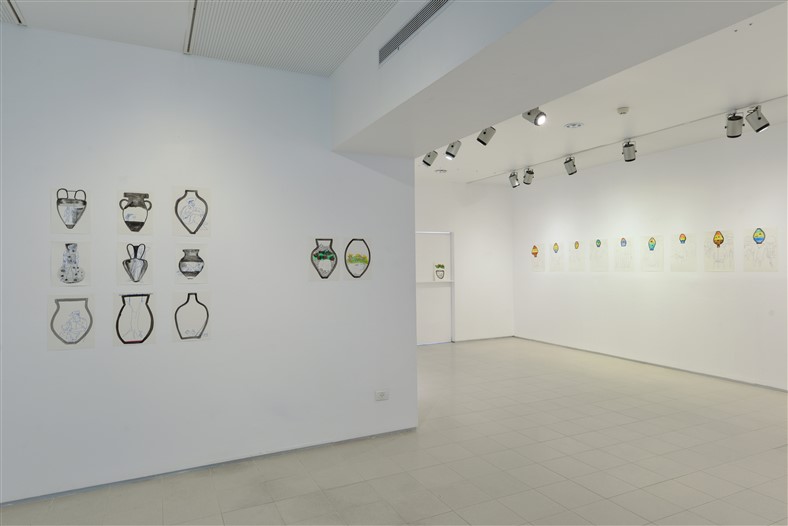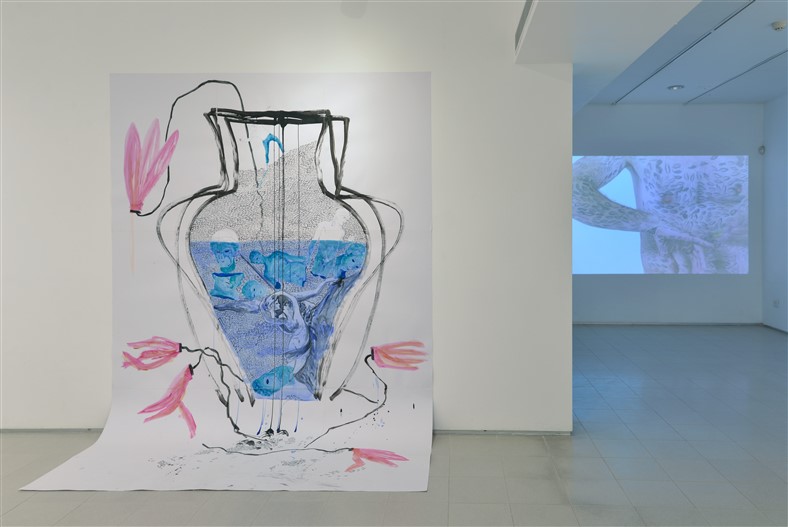Opening: Friday, 17/5/2019 at 12:00
Gallery talk: Friday 28/6/2019 at 11:30
Closing: Saturday, 6/7/2019 at 14:00
Curator: Shlomit Bauman
An Eastern Wind is blowing from the pots. A memory that exposes layer after layer of historical depth found on ancient Greek vessels. The drawings question the content that express the mood of our time? Historical pots of the present? Of identity, nationality and gender?
Liav Mizrahi draws pots. He creates pots, dreams pots, enters and leaves them in various and strange ways. He draws on paper and has an obsessive dialog with the pots as an additional canvas, examining the tension between the representation of the pot and the real thing. He enters the gallery space of the Benyamini Center (the house of pots) and questions his relationship with the pot as an independent entity, space, uterus, body, world, fragment, fragile, archetype, that exists in human culture since the beginning of history.
It all began with a vague childhood memory of a large pot in the garden of his home that broke. A pot that witnessed changing black shadows of camels, palms and the likes. As if the pot made the effort to join lines and figures drawn on it to tell an orientalist story of locality.
Eastern Wind heralds a sultry wind of personal introspection. His name – Mizrahi (from the East) – is as the name of the wind. He draws the pots as he throws them in his mind. He is the pot itself, the story and the contents.
Sometimes the pot is a bodily organ, sometimes part of the landscape and sometimes the head covering. The drawings relate to the painful Israeli reality, an in-depth questioning of personal identity, nationality and gender.
Works
Liav’s drawing are simple and clean– lines and patches of color. They question small and big issues about drawing and about our existence here and now. They refer to daily living as well as internal feelings expressed inside and outside the pot. They refer to art history and craft, the mundane and the sublime. The pots are filled and emptied of their contents, they burst open and disperse layers of reality.
Most of the drawings in the exhibition are watercolors or line drawing giving an impression of quick sketches, light and instinctive, the size of a drawing block. Some of the drawings are monumental that invite the viewer to take refuge inside. In the exhibition a series of drawings based on photographs of detainees from Gaza and Judea and Samaria. There is a sharp contrast between the simple line drawings of the prisoners and soldiers and the pots on the heads of prisoners which are colorful and orientalist.
At the heart of the exhibition is a video where Liav is inside a large pot he has drawn, obsessively covering his body in sunflower seeds. Sunflower seeds symbolize popular Israeli culture and refer to Ai Wei Wei’s work of countless handmade porcelain sunflower seeds. Ai Wei Wei’s work is a protest against the harsh reality and outcome of communism in China, whereas Liav draws the sunflower seeds as a compressed ornament that protects his body but at the same time takes over, wanting to belong and to be different. He becomes the contents of the pot, the object, the sperm and the vagina, his body is overrun decorated and injured, transformed between fantasy and reality, between personal and social.
Shard
Eastern wind (in Arabic Hamsin) is a hot desert wind, deceptive, fata morgana. It appears that Liav uses the pot to protect himself from this wind. The pot is a covering – a kind of cocoon – that enables change of identity within a protected internal world. Liav’s pots are strong, rejecting and defying. They change function, mark and are marked, small and delicate, large and rough. They are general and particular, death and renewal, complete and broken. Sometimes the pot tells a full story, and sometimes just a clue, like a shard of a broken pot.
The exhibition is supported by Keren Rabinovich

